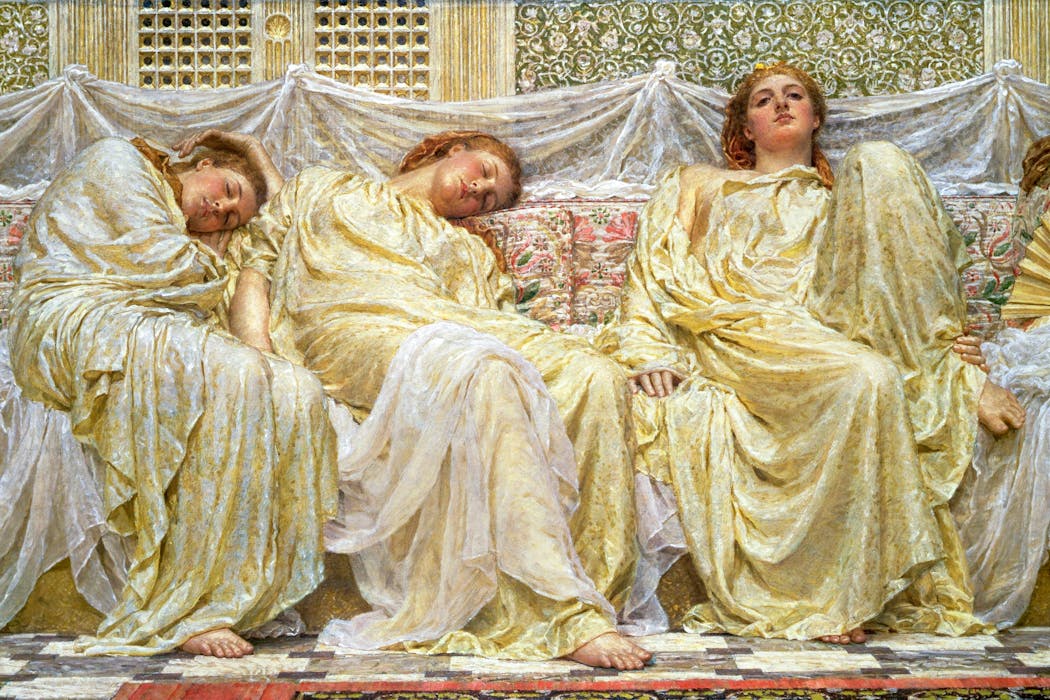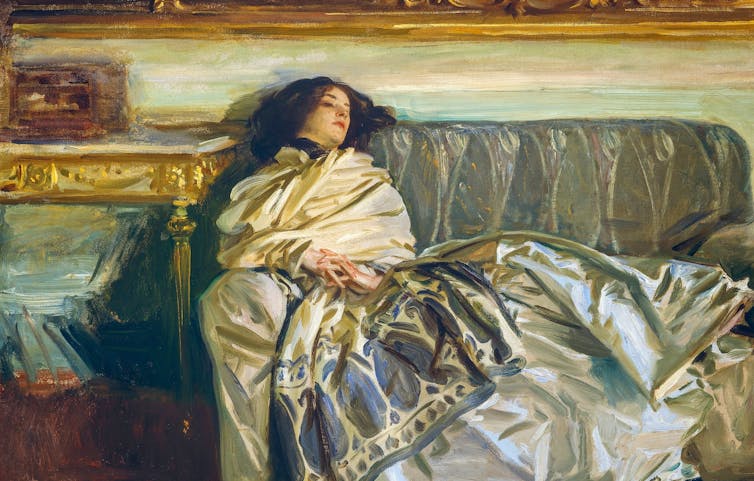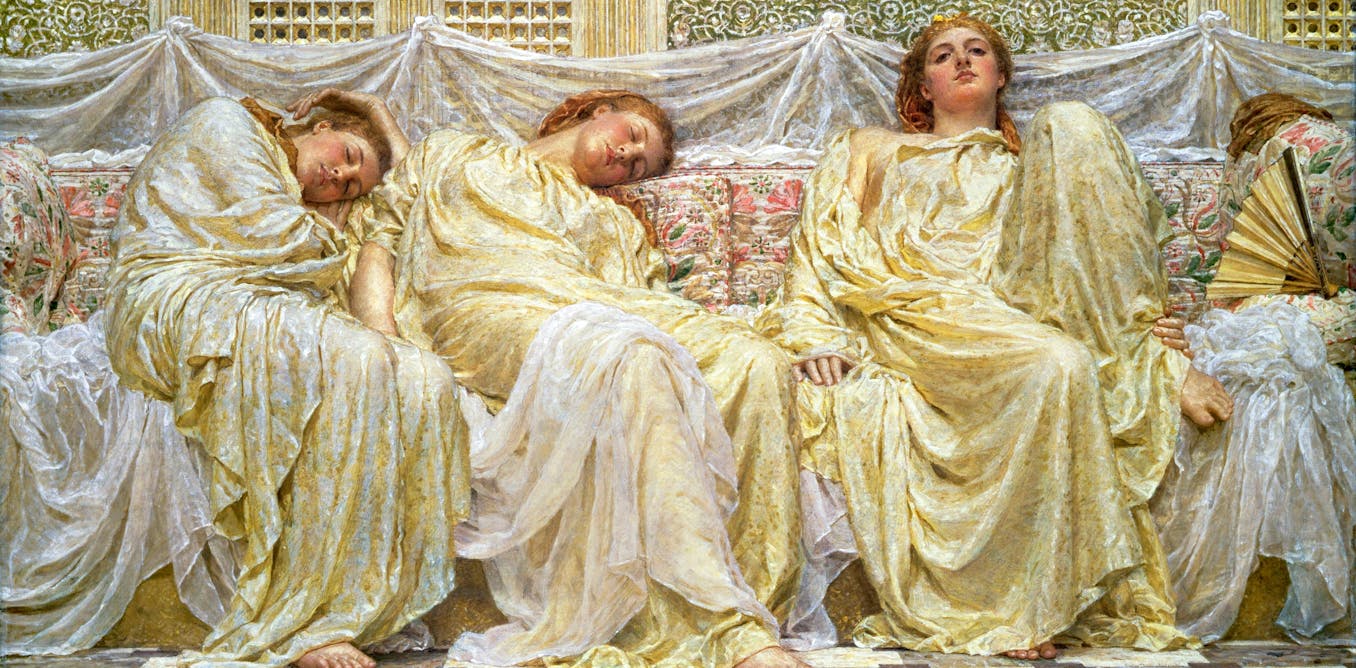
Continuous sleep is a modern habit, not an evolutionary constant, which helps explain why many of us still wake at 3am and wonder if something’s wrong. It might help to know that this is a deeply human experience.
For most of human history, a continuous eight-hour snooze was not the norm. Instead, people commonly slept in two shifts each night, often called a “first sleep” and “second sleep.” Each of these sleeps lasted several hours, separated by a gap of wakefulness for an hour or more in the middle of the night. Historical records from Europe, Africa, Asia and beyond describe how, after nightfall, families would go to bed early, then wake around midnight for a while before returning to sleep until dawn.
Breaking the night into two parts probably changed how time felt. The quiet interval gave nights a clear middle, which can make long winter evenings feel less continuous and easier to manage.
The midnight interval was not dead time; it was noticed time, which shapes how long nights are experienced. Some people would get up to tend to chores like stirring the fire or checking on animals. Others stayed in bed to pray or contemplate dreams they’d just had. Letters and diaries from pre-industrial times mention people using the quiet hours to read, write or even socialise quietly with family or neighbours. Many couples took advantage of this midnight wakefulness for intimacy.
Literature from as far back as ancient Greek poet Homer and Roman poet Virgil contains references to an “hour which terminates the first sleep,” indicating how commonplace the two-shift night was.
How we lost the ‘second sleep’
The disappearance of the second sleep happened over the past two centuries due to profound societal changes. Artificial lighting is one of them. In the 1700s and 1800s, first oil lamps, then gas lighting, and eventually electric light, began turning night into more usable waking time. Instead of going to bed shortly after sunset, people started staying up later into the evening under lamplight.
Biologically, bright light at night also shifted our internal clocks (our circadian rhythm) and made our bodies less inclined to wake after a few hours of sleep. Light timing matters. Ordinary “room” light before bedtime suppresses and delays melatonin, which pushes the onset of sleep later.
The Industrial Revolution transformed not just how people worked but how they
slept. Factory schedules encouraged a single block of rest. By the early 20th century, the idea of eight uninterrupted hours had replaced the centuries-old rhythm of two sleeps.
In multi-week sleep studies that simulate long winter nights in darkness and remove clocks or evening light, people in lab studies often end up adopting two sleeps with a calm waking interval. A 2017 study of a Madagascan agricultural community without electricity found people still mostly slept in two segments, rising at about midnight.

John Singer Sargent/Shutterstock
Long, dark winters
Light sets our internal clock and influences how fast we feel time passing. When those cues fade, as in winter or under artificial lighting, we drift.
In winter, later and weaker morning light makes circadian alignment harder. Morning light is particularly important for regulating circadian rhythms because it contains a higher amount of blue light, which is the most effective wavelength for stimulating the body’s production of cortisol and suppressing melatonin.
In time-isolation labs and cave studies, people have lived for weeks without natural light or clocks, or even lived in constant darkness. Many people in these studies miscounted the passing of days, showing how easily time slips without light cues.
Similar distortions occur in the polar winter, where the absence of sunrise and sunset can make time feel suspended. People native to high latitudes, and long-term residents with stable routines, often cope better with polar light cycles than short-term visitors, but this varies by population and context. Residents adapt better when their community shares a regular daily schedule, for instance. And a 1993 study of Icelandic populations and their descendants who emigrated to Canada found these people showed unusually low winter seasonal affective disorder (SAD) rates. The study suggested genetics may help this population cope with the long Arctic winter.
Research from the Environmental Temporal Cognition Lab at Keele University, where I am the director, shows how strong this link between light, mood and time perception is. In 360-degree virtual reality, we matched UK and Sweden scenes for setting, light level cues, and time of day. Participants viewed six clips of about two minutes. They judged the two minute intervals as lasting longer in evening or low-light scenes compared with daytime or brighter scenes. The effect was strongest in those participants who reported low mood.
A new perspective on insomnia
Sleep clinicians note that brief awakenings are normal, often appearing at stage transitions, including near REM sleep, which is associated with vivid dreaming. What matters is how we respond.
The brain’s sense of duration is elastic: anxiety, boredom, or low light tend to make time stretch, while engagement and calm can compress it. Without that interval where you got up and did something or chatted with your partner, waking at 3am often makes time feel slow. In this context, attention focuses on time and the minutes that pass may seem longer.
Cognitive behavioural therapy for insomnia (CBT-I) advises people to leave bed after about 20 minutes awake, do a quiet activity in dim light such as reading, then return when sleepy.
Sleep experts also suggest covering the clock and letting go of time measurement when you’re struggling to sleep. A calm acceptance of wakefulness, paired with an understanding of how our minds perceive time, may be the surest way to rest again.
![]()
Darren Rhodes does not work for, consult, own shares in or receive funding from any company or organisation that would benefit from this article, and has disclosed no relevant affiliations beyond their academic appointment.



